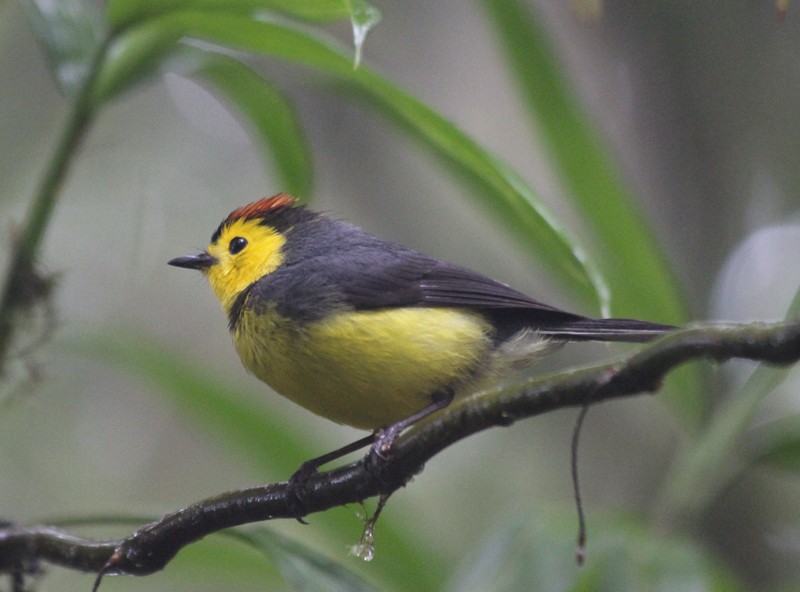Collared Redstart
A species of Whitestarts Scientific name : Myioborus torquatus Genus : Whitestarts
Collared Redstart, A species of Whitestarts
Botanical name: Myioborus torquatus
Genus: Whitestarts
Content
Description General Info
 Photo By Benjamin Keen , used under CC-BY-SA-3.0 /Cropped and compressed from original
Photo By Benjamin Keen , used under CC-BY-SA-3.0 /Cropped and compressed from original Description
The collared whitestart is around 13 centimetres (5 in) in length with a weight of 10.5 grams (0.4 oz). It has a chestnut crown bordered with black, and a black forehead. The rest of the upper parts are slaty black, and the tail is black with white edges, hence the bird's name: "start" is an old English word for "tail". The face and underparts are bright yellow, with a black band across the breast. The sexes are similar, but young birds are duller, with a browner back, weakly yellow underparts, and the head entirely slate-coloured, with no yellow on the face or red on the crown. 
Size
13 cm
Nest Placement
Shrub
Feeding Habits
Collared Redstart, primarily insectivorous, consumes various insects. It forages actively, often fluttering near foliage. Unique adaptations or preferences in diet were not detailed.
Habitat
The collared Redstart is primarily found in humid montane forests that feature dense, mossy undergrowth and is often associated with timberline environments. These birds thrive in areas where forests meet open landscapes, such as forest edges, clearings, and gaps, as well as in adjacent secondary growth, bushy ravines, and pastures. They show a preference for these transitional habitats over deep forest interiors, occupying a range that generally corresponds to higher elevation regions.
Dite type
Insectivorous
General Info
Feeding Habits
Bird food type
Behavior
The call is a sharp pit, and the song is a mixture of slurred whistles, warbles and trills. The collared whitestart feeds on insects, frequently fanning its striking tail as it pursues its prey. It will join mixed feeding flocks, and will follow cattle and occasionally humans for the insects they flush. The roofed nest has a round side entrance and is built on the ground or a steep bank, hidden amongst rocks, tufts of grass or under a fallen log. It is constructed from strips of bark, plant fibres, leaves, and grass. From March to May, the female will lay 2 or 3 white or cream eggs that are speckled with fine brown spots. Incubation lasts about two weeks, but other nesting details are largely unknown. 
Species Status
Not globally threatened.
Scientific Classification
Phylum
Chordates Class
Birds Order
Perching birds Family
New world warblers Genus
Whitestarts Species
Collared Redstart